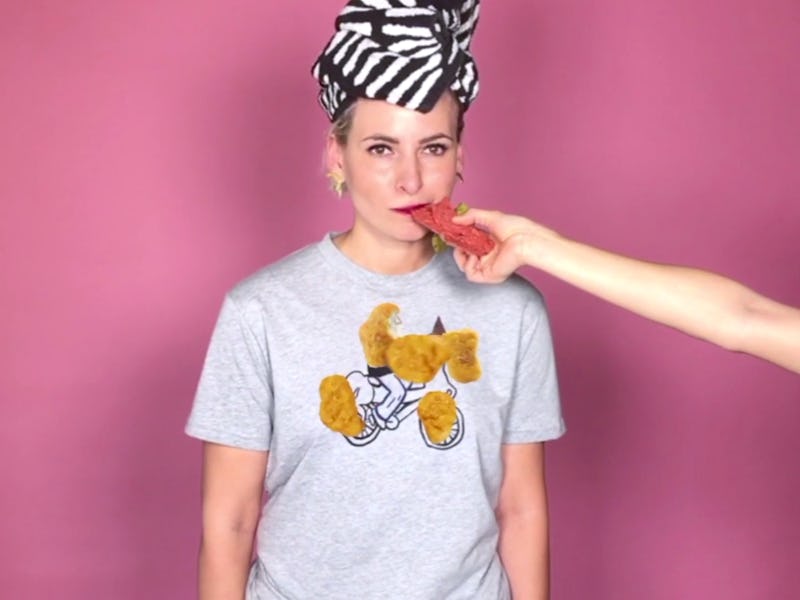The Animated GIF Political T-Shirt of the Future Has Arrived in Augmented Reality
Heather Lipner, the founder of Drawsta, likes hidden messages and likes it more when people find them.

Snapchat rolled out its entertaining and frequently updated facial filters, users have been mesmerized by their own dog-nosed faces. Though the filters are available to everyone, the experience of seeing weird features superimposed on your own face is endlessly entertaining because that is — for better or worse — how human brains work. Now imagine if similar technology suddenly allowed designers to similarly augment fashion statements. This is what Heather Lipner, the founder of Drawsta, wants to do. She wants to make the rock tee old hathas laid claim to facial augmented reality with its frequently updated and endlessly entertaining filters, but Heather Lipner, the founder of a new t-shirt line called Drawsta, is making a foray into uncharted territory: where fashion meets augmented reality.
Drawsta is, at its core, a t-shirt line. But it’s also an augmented reality company. The shirts come with an app that, when pointed at them, registers the image and displays a custom animation. Depending on which of the two shirts you buy “Random” or “IRL” – the animations that appear on your shirt will be straight goofy or rooted more in social and political consciousness, respectively. The footage you collect is then ready to share on social media.
What augmented reality fashion allows Lipner to do is create new looks for old shirts. She sells the same amount of fabric as her competitors, but a many more design iterations. This is significant not only because it’s fun, but because it’s less wasteful than the more popular modern approach: Making new shirts all the time and selling them for cheap. “Even brands that say they’re eco friendly aren’t,” she says. “All this fast fashion isn’t good for the environment and there’s no substance behind it either.”
By making everyth, especially in terms of sustainability. People constantly crave the newest fashion trends, but manufacturing digDrawsta only requires that you purchasine maximum of two t-shirts—the entirely digital experience that follows is Lipner’s way of helping our planet.
Even more notable, however, is the fact that Lipner’s product has successfully married the immediacy of augmented reality with fashion, an industry that was eager to adopt the term “fast” precisely because of its inherent slowness. Often times clothing products are designed a year in advance of their release, which requires designers to predict future trends. In a cultural moment dictated by viral internet moments and mercurial digital trends, these predictions are often problematically wrong. Drawsta’s speeds fashion way the hell up.
“If I have an idea tomorrow, it could go up on the t-shirts the next day,” says Lipner.
The only issue — well, the obvious one — with Drawsta is adoption. Without the app, people can’t see each other’s’ t-shirts, which means that those rocking Drawsta tees are likely going to end up preaching to the animated choir. This is problematic, but it also feels inevitable. T-shirts have long been more of a tool for communicating affiliation that for changing minds. (Thus the proliferation of band shirts.)
Lipner is fine with this because she’s fine with having a more defined demographic. She says that she intends to harness Drawsta’s potential to create unique, wearable political expressions to advocate for the progressive causes she believes in. She looks forward to collaborating with influencers and celebrities to spread liberal (but definitely not hidden, you conspiracy types) political messages. But she’s also open to collaborating with non celebrities. The immaterial nature of Drawsta design makes it easier for her experiment with other peoples’ designs without committing a lot of capital to the effort. She’s able to crowdsource some of the design work.
At the end of the day, that might be the most radical thing about her business.